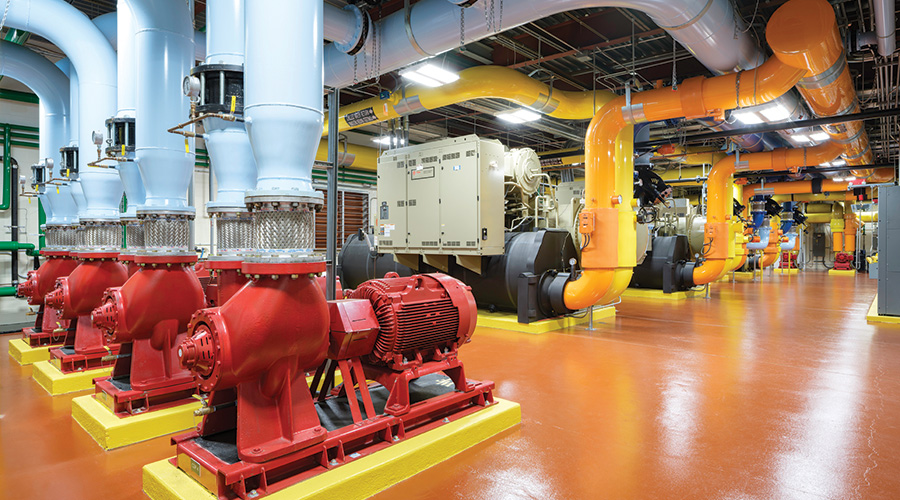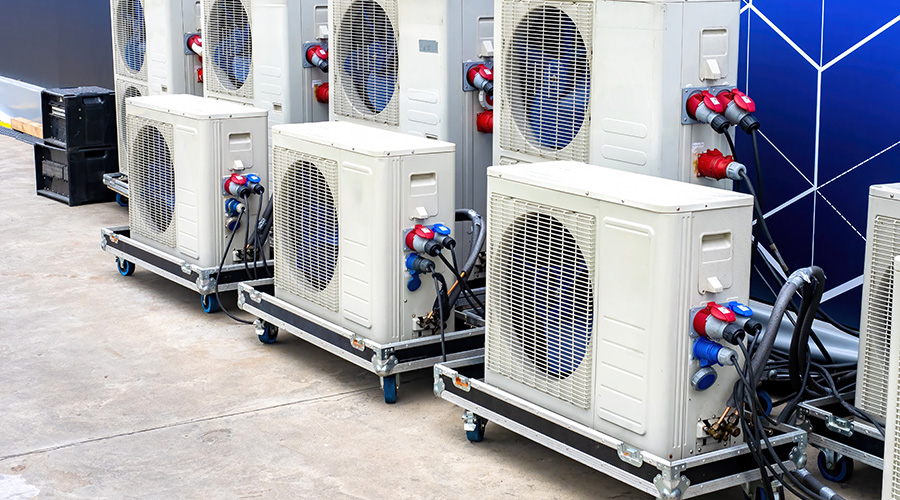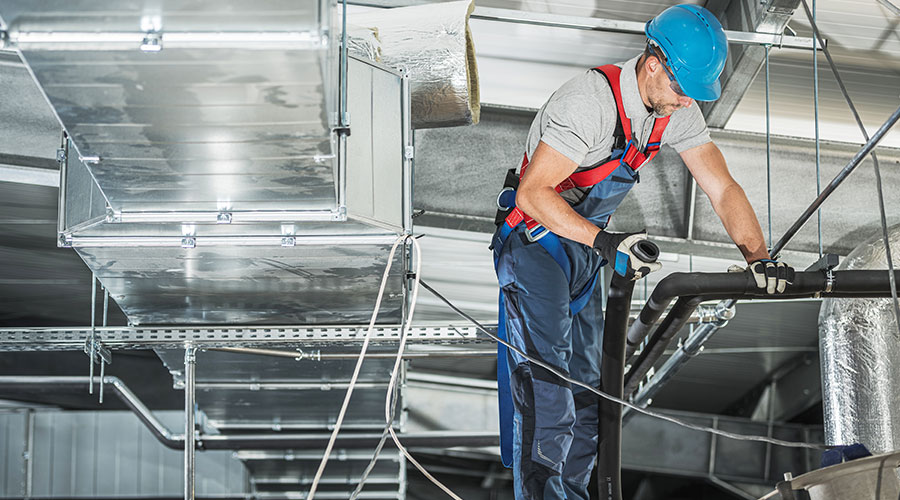Midland Independent School District's Journey to Modernize HVAC Systems
Midland Independent School District reaps benefits of multi-phase HVAC upgrade projects.
By Dan Hounsell, Senior Editor
Cortney Smith is all too aware of the challenges involved in maintaining aging HVAC systems and equipment in his Texas school district’s aging facilities.
“The average age of facilities in the district is 60-plus years, so we've got some aging facilities,” says Smith, chief of facilities and operations with the Midland Independent School District. “When you have buildings as old as the ones we have, a lot of that equipment was original to the building. And when you take into account aging infrastructure, existing HVAC systems, they needed to be updated and modernized, just again due to their age and the maintenance challenges that go along with that.
“Older systems are just difficult to maintain with frequent breakdowns, comfort issues and service disruptions. It was a big challenge for our maintenance team.”
Maintenance and engineering managers in the nation’s school districts have been maintaining aging facilities for decades, and their challenges have been well documented: tight budgets, inefficient and unreliable components and systems, and rising complaints from occupants.
The COVID-19 pandemic in early 2020 emphasized what managers already knew: Healthy indoor environments are essential in providing indoor environments that keep occupants and visitors safe. Fortunately for many managers, the pandemic also created conditions that enabled them to plan, perform and pay for system upgrades to modernize critical HVAC systems and provide improved indoor comfort for occupants.
Laying out the strategy
The Midland Independent School District’s stock of aging facilities includes schools, administrative buildings and other educational spaces.
“We've got 39 campuses that we oversee with a total of about 45 buildings when you take into account the ancillary facilities,” Smith says. “They have about 3.8 million square feet.”
In early 2022, the district decided to address the many challenges facing its facilities, and especially its HVAC systems, with a series of four energy efficiency capital refresh projects. Funding for the first phase included money from the district’s general budget, as well as stimulus funds in the form of Elementary and Secondary School Emergency Relief.
The total cost of the first three phases was $18.96 million, while the cost of the upcoming final phase is $12.8 million, for a total just under $32 million.
“Phase four, which was board approved two months ago, will start right after the new year (2024), and we expected to be completed at the end of 2024,” Smith says. “It comes to just under $32 million worth of HVAC equipment upgrades across the district touching 25 different campuses.”
Planning the upgrades involved addressing the needs of students and teachers in facilities, and it addressed the impact of system repairs on in-house maintenance staff.
“We’re not touching every campus, but we looked at each issue and took into consideration the work orders, the problem areas,” Smith says. “That’s how we pinpointed those 25 schools, working with our contractor to narrow that scope down. We're going to really assist our maintenance team in finding our biggest problem areas, and we’ll help our students and staff with better equipment across those 25 schools.”
Inside the projects
Projects in the initial phase of HVAC upgrades in the Midlands Independent School District addressed aging HVAC infrastructure, comfort cooling and heating, and building airflow and quality. Projects also addressed chiller, boiler, and rooftop HVAC equipment replacement for prioritized schools.
In all, the plan involves replacing 12 chillers, one cooling tower, 40 rooftop units, 18 air handling and two related condensing units, 23 boilers, and 24 chilled water and hot water pumps. The initial phase of the EECRP also included retrofitting 15 locker room areas in five schools with comfort cooling and heating, including outside air capability.
“Phase one and phase four were the two biggest pieces,” Smith says. “Phase one consists of adding HVAC to locker rooms. Again, some of these buildings were very old and didn't even have heating or air conditioning in the locker rooms.
“Chiller and chilled water tower replacements took place in phase one —replacement of chilled water pumps and some chiller renewals, where we go in and keep the shell of the actual chiller but redo the guts, if you will. We replaced the boilers, and hot water pumps got replaced."
Smith says the process of selecting the products and technology for the upgrade projects has been a team effort involving the district’s maintenance director and facilities and design director.
“We researched and evaluated HVAC systems and equipment options,” he says. “We collaborated with different HVAC consultants, engineers and vendors to assess product suitability for our district. We knew what we wanted, and we wanted everything to stay uniform.
“Our maintenance director has been around a long time. He knows what he likes and what he doesn't and what is suitable for our needs. We wanted to keep everything uniform, but we also considered factors such as the performance of the equipment. How energy efficient was it, and what's it going to take to maintain it?”
Overcoming hurdles
As with all complex projects in facilities, the HVAC upgrades in Midland Independent School District's schools have come with challenges along the way.
‘The biggest challenge is scheduling this size project and coordinating everything with our campus principals,” Smith says. “You're talking about cranes getting involved and all the events going on in our schools, so the parking lots have got to be empty, and they’re in there after hours and over the weekends.
“There's always somebody on campus it seems like. The biggest challenge is coordinating with campus principals and campus administration about when we can get in to do this work. There will be a time where you have an entire wing or an entire campus that is down that doesn't have HVAC. When can you find a two- or three- or four- or five-day period for that to happen?”
The COVID-19 pandemic also took a toll on the planning for and performing the upgrades.
"The biggest impact was the availability of material being delayed,” Smith says. “The timelines for projects had to be adjusted because things got shut down. It wasn’t only contractors’ work. We couldn't get electrical equipment. We might be able to get the shell of the air handler, but we couldn't get the controls for it.”
While the impact of the pandemic on the supply chain might be receding, the issues are not gone completely.
“We're getting to the end of it,” Smith says. “Things are starting to pick back up in the last few months. We're still having some problems getting electrical switches and things for projects. That was the biggest thing, not being able to get things in a timely manner and having to be really patient.”
Results and lessons
Despite the complexities and challenges of the district’s HVAC upgrade projects, Smith says the hoped-for benefits of the investments have started to show up.
“We've seen a reduction in comfort calls in the areas where we have replaced equipment,” he says. “We've received compliaments and many thank yous from teachers and administrators, honestly, for replacing that equipment.”
Just as important are the benefits for the district’s in-house maintenance staff.
“We've seen a drastic decrease in maintenance requirements and work orders, which is a big help to our staff,” he says. “We're touching 25 campuses, but that still leaves 14, and we're chasing work orders on some of these.
“Anytime you put in new equipment and it's running more efficiently and it's more reliable, that just helps the staff. The increase in system reliability and the decrease in maintenance are big.”
As for the sustainability and bottom-line benefits, those have yet to be tallied fully.
“I haven’t had time to dive into it, but the new equipment has got to be more energy efficient,” he says. “We want to put a pencil to it at the close of this project and run some billing reports and energy usage reports on these campuses that had equipment replaced and compare these bills and utility costs after the equipment was installed.”
Beyond the tangible benefits of projects with a large scope and intended impact, Smith also offered some lessons from the work that might benefit future upgrades.
“It's important to make sure you do thorough research and evaluate all your HVAC products and technologies that you're going to bring into your facilities, and we did that on the front end,” he says. “If you're used to a certain type of equipment or a certain brand and you haven't had any issues with anything, it's important to keep that product in line with the other campuses in the district where equipment is replaced.”
Smith also stressed the role of contingency planning in ensuring the success of facility upgrades: “There's always something that's going to happen, but if you're proactive in planning for those unexpected things, that can alleviate a lot of issues.”
Dan Hounsell is senior editor for the facilities market. He has more than 30 years of experience writing about facilities maintenance, engineering and management.
Related Topics:












